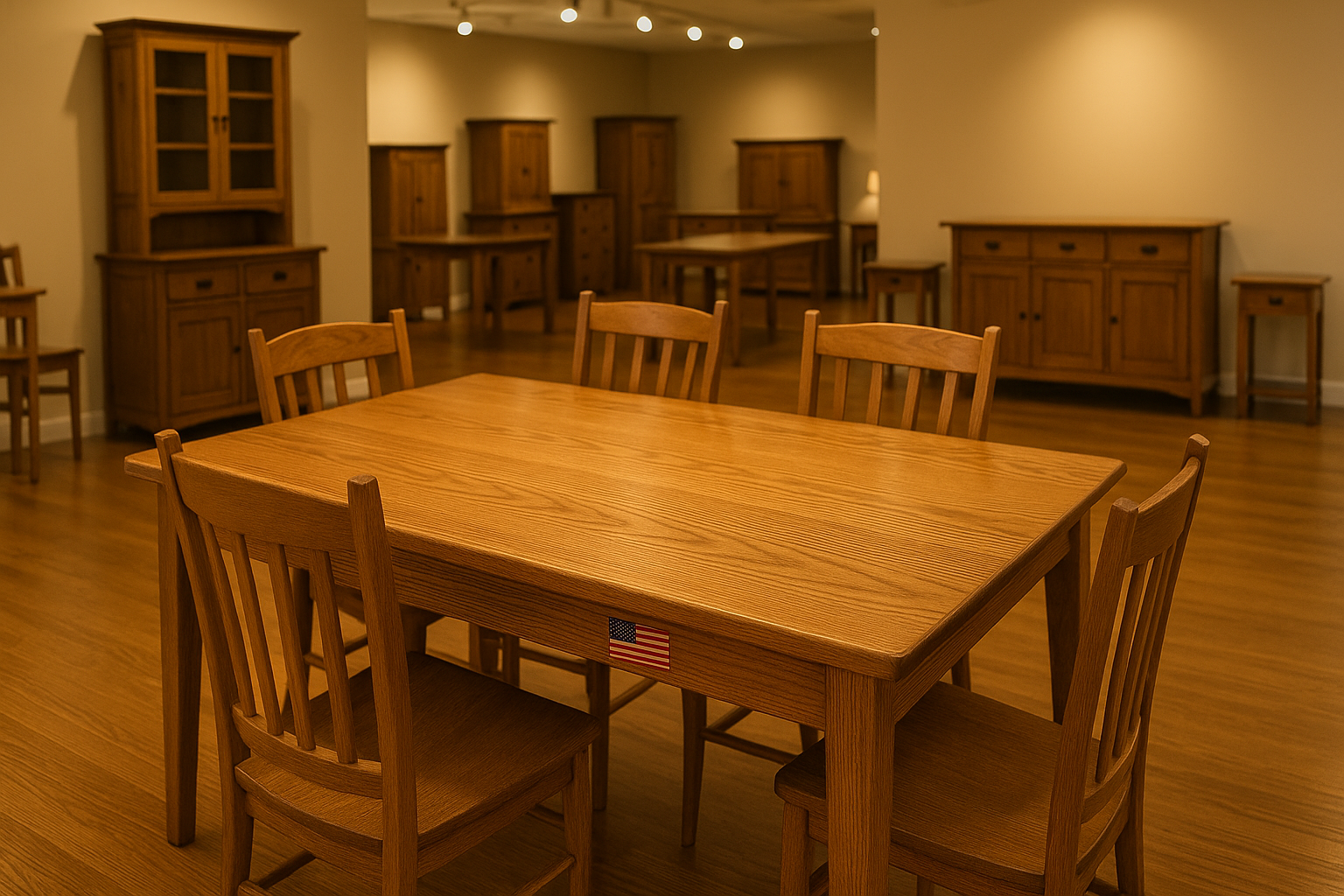In the corner of a North Carolina showroom, there it was: a simple oak dining table with a small American flag decal affixed to its underside. The price? About 25% higher than its imported counterpart just three aisles over.
This, folks, is economic nationalism in action. And nowhere is it playing out more visibly than in America's furniture industry.
The quiet resurrection of American furniture manufacturing has been building momentum since 2018, though you'd be forgiven for missing it among flashier headlines. I've spent the past seven months visiting furniture makers across the Carolinas and Virginia—once the unquestioned heart of American furniture production—and what I'm seeing suggests something more significant than a passing trend.
"We couldn't get people to care about 'Made in America' ten years ago," says Jim Becker, who's operated a small furniture workshop in High Point, NC for twenty-three years. "Now it's the first thing customers ask about."
Is this resurgence simply patriotic sentiment wrapped in upholstery? Not quite. There's something more complex at work.
The pandemic, with its maddening supply chain disruptions, exposed the vulnerability of our extended global networks. When consumers found themselves waiting eight months for a sofa from Vietnam (I spoke with families who eventually canceled orders after repeated delays), domestic manufacturers suddenly had a compelling story to tell.
The economics remain... challenging. American labor costs tower over those in traditional furniture manufacturing hubs like Vietnam and China. And yet.
Companies are making it work through a combination of strategies that would've seemed implausible a decade ago. Automation helps. So does a renewed focus on customization—the kind that's difficult to coordinate across oceans and time zones. Then there's the marketing value of that "Made in America" tag, which seems to justify a hefty premium in certain markets.
Look, this isn't happening everywhere equally. The high-end market never fully abandoned American manufacturing. Your Ethan Allens and premium brands maintained significant domestic production even during the great outsourcing wave of the early 2000s. What's truly noteworthy is the middle market's return.
Having tracked manufacturing trends since 2016, I can tell you this shift represents something deeper than furniture preferences. It's about economic anxiety finding a tangible outlet. People might not understand complex trade policy debates, but they understand the difference between a chair made in North Carolina versus one made overseas.
There are costs to this nationalistic approach, of course. The most obvious? Higher prices. There's also the question of capacity—can American manufacturers actually scale up if this trend accelerates? Many of the craftspeople who once defined the industry have moved on to other careers.
"We're training people from scratch," explains Dana Moretti, HR director at a recently expanded factory in Virginia. "The skills were lost for a generation. That doesn't come back overnight."
(It's worth noting that many "American-made" pieces still incorporate imported components—a detail salespeople tend to gloss over when highlighting local craftsmanship.)
The real test will come when supply chains fully normalize. Will consumers maintain their willingness to pay more for domestically produced furniture when the imported alternatives are readily available? Or is this merely a temporary response to extraordinary circumstances?
I watched a couple in a showroom last month debating between two nearly identical dining sets—one American-made, one imported, with a $600 price difference. They ultimately chose the American option, with the husband muttering something about "keeping jobs here" as they completed the paperwork.
That moment—multiplied across thousands of showrooms nationwide—might just be reshaping an entire industry.
Or not. The furniture business has always been fickle. But for now, American manufacturers are enjoying their moment in the spotlight, building pieces that will last long enough for us to see which way this particular economic wind continues to blow.
